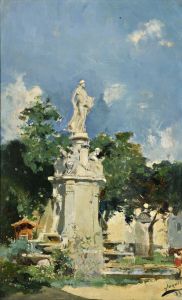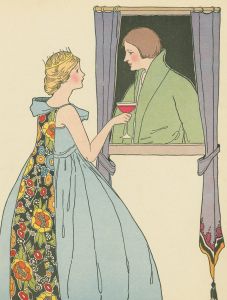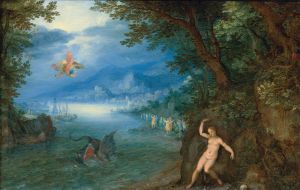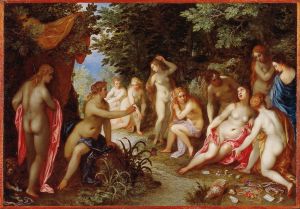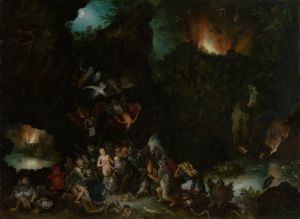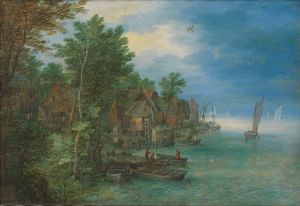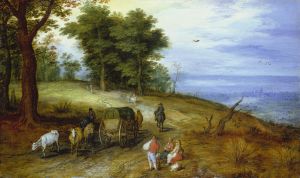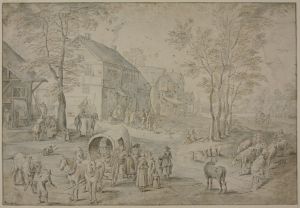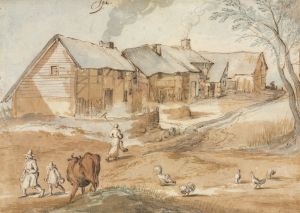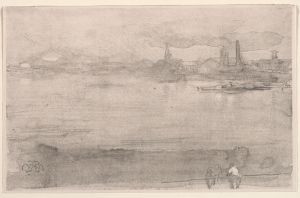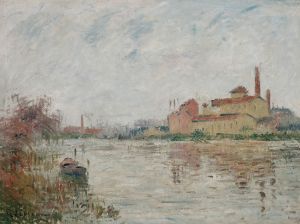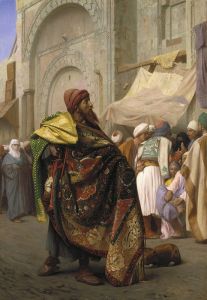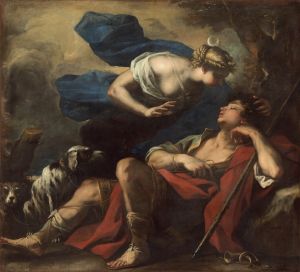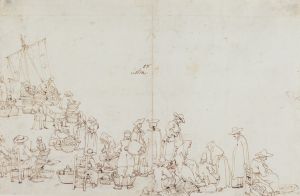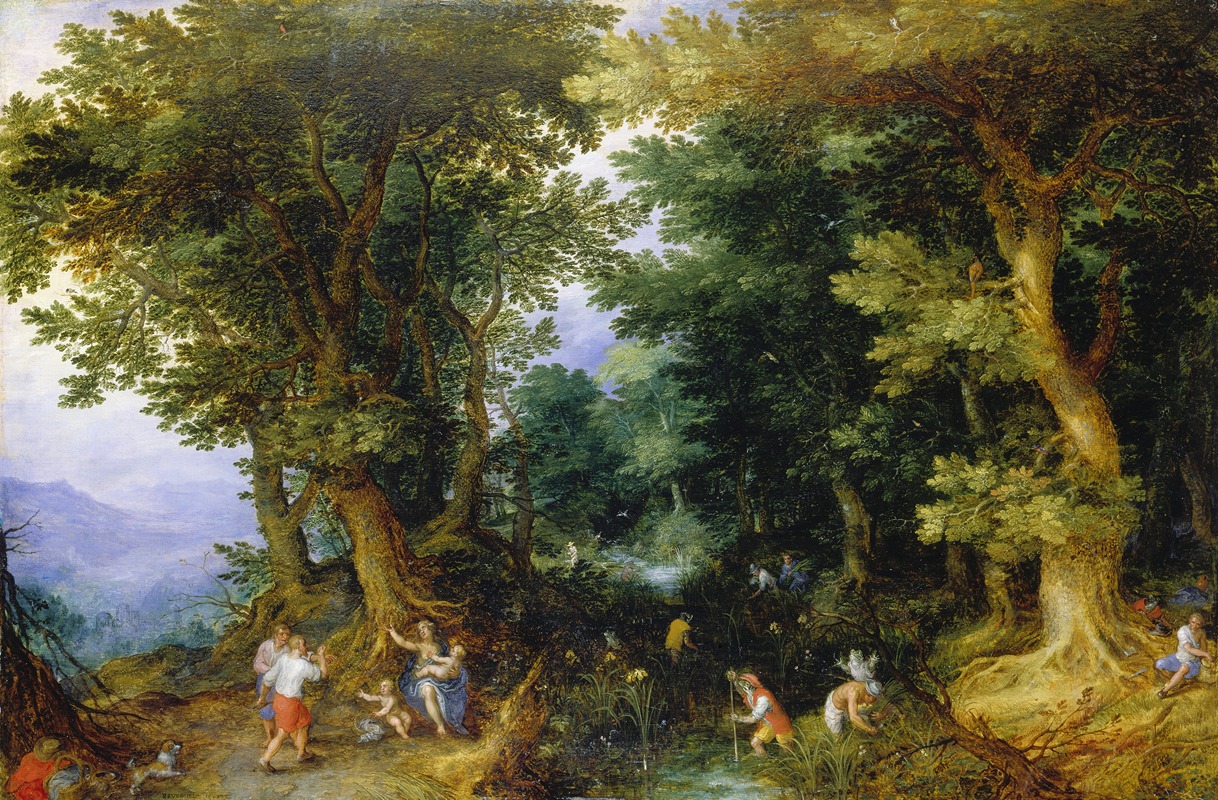
The Mocking of Latona
A hand-painted replica of Jan Brueghel The Elder’s masterpiece The Mocking of Latona, meticulously crafted by professional artists to capture the true essence of the original. Each piece is created with museum-quality canvas and rare mineral pigments, carefully painted by experienced artists with delicate brushstrokes and rich, layered colors to perfectly recreate the texture of the original artwork. Unlike machine-printed reproductions, this hand-painted version brings the painting to life, infused with the artist’s emotions and skill in every stroke. Whether for personal collection or home decoration, it instantly elevates the artistic atmosphere of any space.
Jan Brueghel the Elder, a prominent Flemish painter of the late 16th and early 17th centuries, is known for his detailed landscapes and vibrant use of color. Among his extensive body of work is "The Mocking of Latona," a painting that reflects his mastery in combining mythological themes with intricate natural settings.
"The Mocking of Latona" is based on a story from Ovid's "Metamorphoses," a classical text that has inspired countless works of art throughout history. The myth involves Latona, the mother of the twin deities Apollo and Artemis, who was wandering the earth after being exiled by the goddess Juno. In her travels, Latona came upon a pond and attempted to drink from it, but the local peasants, under Juno's influence, mocked her and stirred the water to prevent her from quenching her thirst. In response, Latona transformed them into frogs, condemning them to live in the muddy waters they had tried to deny her.
Brueghel's depiction of this mythological tale is characteristic of his style, which often includes lush, detailed landscapes populated with numerous figures. In "The Mocking of Latona," the artist captures the moment of confrontation between Latona and the peasants. The painting is rich in detail, with a focus on the natural environment that surrounds the figures. Brueghel's skill in rendering flora and fauna is evident, as he meticulously paints the vegetation and wildlife that populate the scene.
The composition of the painting is carefully structured, with Latona positioned prominently in the foreground, her expression conveying a mix of desperation and divine authority. The peasants, depicted with animated gestures, are shown in the act of mocking her, their faces twisted in derision. The background features a serene landscape, a contrast to the tension in the foreground, highlighting Brueghel's ability to balance narrative and setting.
Jan Brueghel the Elder was known for his collaborations with other artists, including Peter Paul Rubens, and his work often reflects a synthesis of different artistic influences. While "The Mocking of Latona" is primarily attributed to Brueghel, it is possible that elements of the painting were influenced by or even executed in collaboration with other artists of his time, although specific details of such collaborations on this particular work are not well-documented.
Brueghel's paintings were highly sought after during his lifetime, and his ability to convey complex narratives within richly detailed environments contributed to his reputation as a leading artist of the Flemish Baroque period. "The Mocking of Latona" exemplifies his talent for storytelling through art, capturing a moment of mythological significance with both emotional depth and visual splendor.
Today, Jan Brueghel the Elder's works, including "The Mocking of Latona," are appreciated for their historical and artistic value. They offer insight into the cultural and artistic milieu of the time, as well as Brueghel's unique ability to blend narrative and nature in his paintings. His legacy continues to influence artists and captivate audiences, ensuring his place in the annals of art history.





